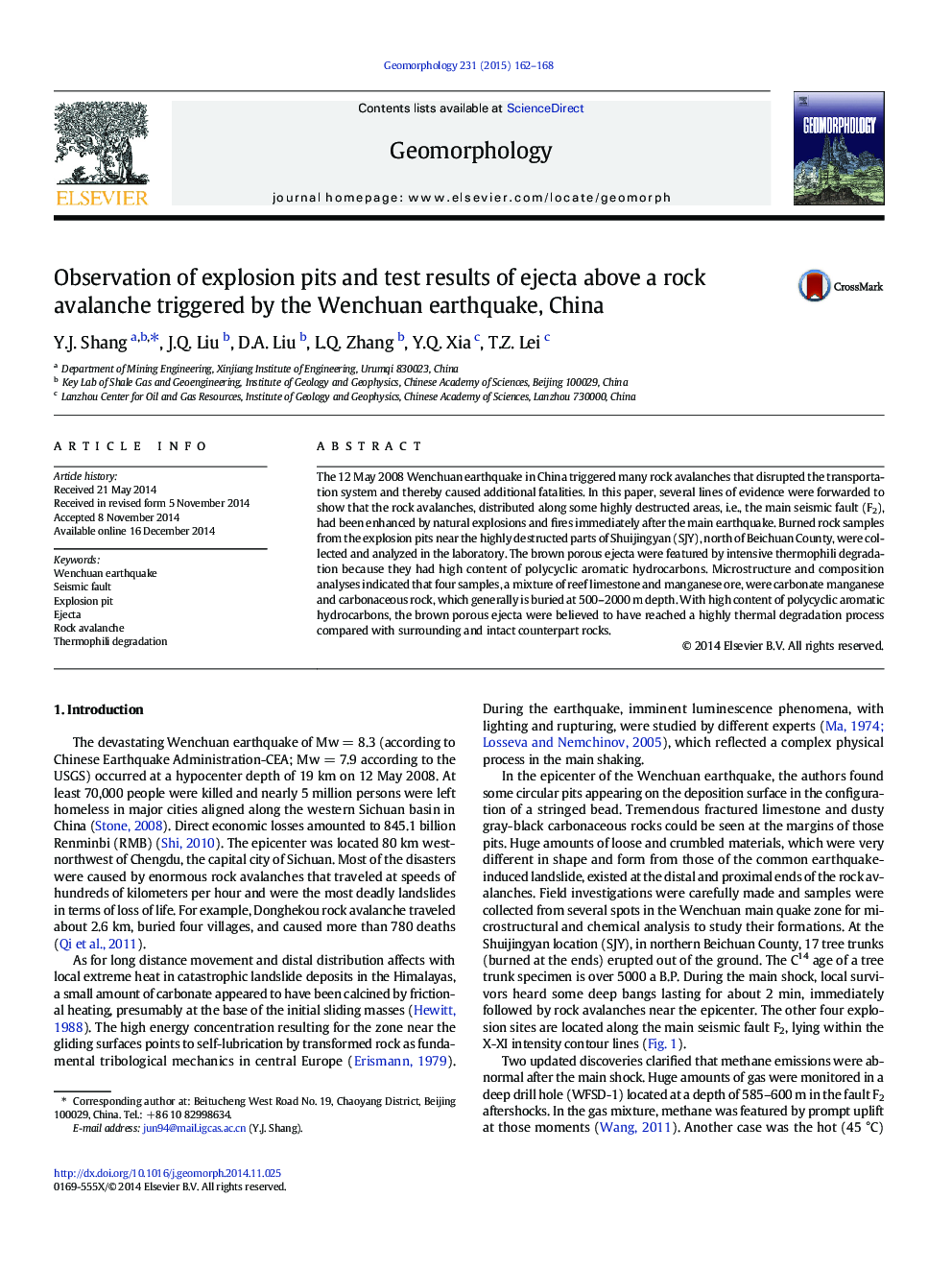| Article ID | Journal | Published Year | Pages | File Type |
|---|---|---|---|---|
| 4684327 | Geomorphology | 2015 | 7 Pages |
•Gas explosion induced by the Wenchuan quake an enhanced rock avalanches.•The distinctive ejecta were carbonate manganese from reef limestone and manganese ore under 500 ~ 2000 m depth.•Rich gas storage and distribution near seismic faults should be paid more attention.
The 12 May 2008 Wenchuan earthquake in China triggered many rock avalanches that disrupted the transportation system and thereby caused additional fatalities. In this paper, several lines of evidence were forwarded to show that the rock avalanches, distributed along some highly destructed areas, i.e., the main seismic fault (F2), had been enhanced by natural explosions and fires immediately after the main earthquake. Burned rock samples from the explosion pits near the highly destructed parts of Shuijingyan (SJY), north of Beichuan County, were collected and analyzed in the laboratory. The brown porous ejecta were featured by intensive thermophili degradation because they had high content of polycyclic aromatic hydrocarbons. Microstructure and composition analyses indicated that four samples, a mixture of reef limestone and manganese ore, were carbonate manganese and carbonaceous rock, which generally is buried at 500–2000 m depth. With high content of polycyclic aromatic hydrocarbons, the brown porous ejecta were believed to have reached a highly thermal degradation process compared with surrounding and intact counterpart rocks.
